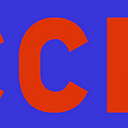Thanks, Mr. President, but Chicago Can Solve Violence on Its Own.
Last January President Trump tweeted Chicago’s leaders that if they couldn’t solve the city’s violence, he’d solve it for them.
“The time for small thinking is over,” he declared.
So what’s happened since then? Any big thinking?
Nope. But about ending small thinking, he’s dead right.
How so? In 1992 Mayor Richard M. Daley told 50 YMCA Youth Aldermen that “Chicago has lost two generations of young people to gangs and drugs.”
“Adults,” he said, have “failed to solve the problem.”
Since then, Chicago has lost a third generation and is fast losing a fourth, with no end in sight to this wartime loss of life. Or its crippling social and economic costs.
Since 2000, some 200,000 Chicagoans have fled their home city and its over 100,000 members of violent, drug-dealing street gangs.
That’s the reality. The big picture. It’s also the tip of the iceberg covering the racial, economic, educational, medical, legal, and political roots of violence.
So has Chicago ever thought big about them?
No. City leaders have never looked to 2.7 million Chicagoans for the energy and understanding needed to solve violence strategically and holistically.
Instead, they’ve treated violence as fundamentally unsolvable and as theirs to deal with. No real citizen input. Over they years they’ve deployed scores of disconnected, tactical programs aimed merely at preventing, reducing, or containing it.
Programs that all too often wither and die for lack of community awareness.
Let’s face it: the billions of taxpayer and foundation dollars spent on these tactical programs haven’t even reduced violence in Chicago.
So is it even possible to think big about solving violence here?
Sure it is. And it always has been. Just look around. These days Chicagoans are thinking big about the Cubs’ drive to win another World Series. It’s everywhere on TV and media. It’s citywide. And it’s a game!
To think big about violence, Chicago, do likewise. Conduct the drive to solve it in media-based contests — laser-focused searches for solutions — that Chicagoans can see and get involved in, as they do with the Cubs.
Involve Chicagoans in prime-time electronic public forums where the city’s best problem-solvers compete to find best solutions, large and small, in season-long contests that earn the votes of viewers and the respect and participation of Chicagoans and City Hall.
Tap deep into the experience, courage, intelligence and wisdom of Chicagoans. Accentuate the positive. Built trust. Highlight love of family, neighborhoods and Sweet Home Chicago.
Bring out the best in Chicagoans, not the worst, as usually happens on TV.
Show 2.7 million Chicagoans thinking and working together as a community, a city and a people.
Do this with exacting rules and exciting rewards that attract talented problem solvers of all ages and backgrounds and get Chicagoans listening to and learning from each other.
Reinforce the rules, as baseball does, with expert commentary, instant fact checking and instant replay so Chicagoans respect them as they respect the rules of baseball.
Finally, connect city and suburbs in these programs so sponsors can tap the Market of the Whole of all members of the Chicagoland community.
Get the idea? Now consider Chicago FIXIT.
It’s a six-month search for solutions: a prime-time talent contest modeled — of all things — on reality TV talent contests like The Voice or Dancing with the Stars.
Moderated by a charismatic host — judicious, knowledgeable, straight-talking — FIXIT can air on a shoestring budget or with all the bells and whistles of high-production reality TV.
Phase I invites and challenges Chicagoans to end violence. Then it conducts a crazy/amazing/productive citywide search for sixteen four-member teams of gifted problem-solvers.
Teams can be any mix young people and adults, experts and laymen, city and suburban residents, people on both sides of the law.
Teams invent and reinvent solutions based on their experience, research and the rigorous critiques of journalists, academics and public officials.
In Phase II, FIXIT’s Sharp Sixteen teams compete to make its Expert Eight finalists. FIXIT’s point-scoring system rates teams and solutions. Weekly viewer votes decide winners.
In Phase III, viewers choose a Best Team and Best Solution. The winning solution is ceremoniously presented to Chicago’s mayor on an advisory basis. Chicago celebrates!
Almost overnight, FIXIT’s privately funded, commercially-sponsored, action-packed battle of ideas has morphed violence from unsolvable to solvable.
All at no cost to taxpayers.
And Chicagoans can’t wait for FIXIT’s second season.
With Chicago FIXIT, Mayor Emanuel can tell President Trump that Chicago is thinking big about violence — on its own, thank you — in dynamic ways that other cities are fast replicating.
All because Chicago — once the poster child for violence in America — was America’s first city to realize that solving violence in a Digital Age is as much a public communications matter as one of public health, public education or even public safety.
— — — — —
Steve Sewall, Ph.D., is a Chicago educator, media entrepreneur and Director of Chicago Civic Media. He is advancing the FIXIT concept at 365CivicLetters.com. Chicago FIXIT is a localized version of America’s Choice, his 2006 treatment for politically themed reality TV. See also ChicagoCivicMedia.com.
